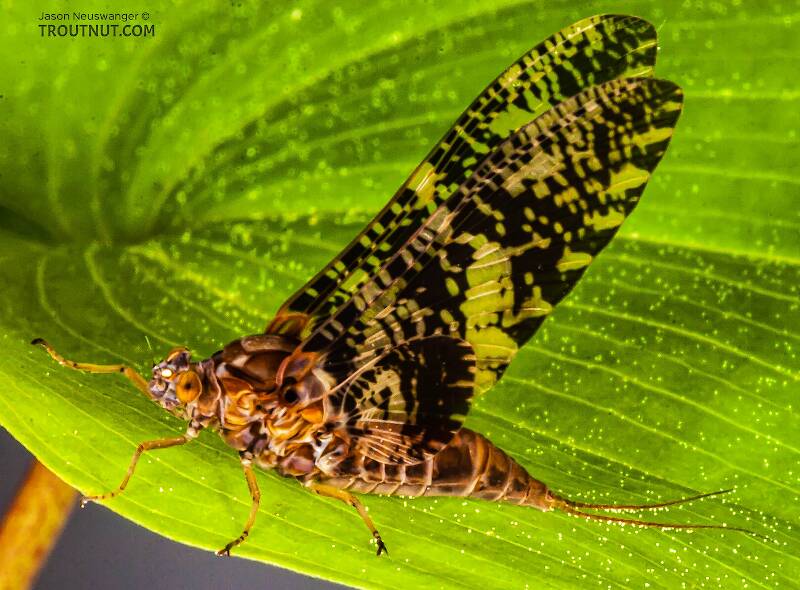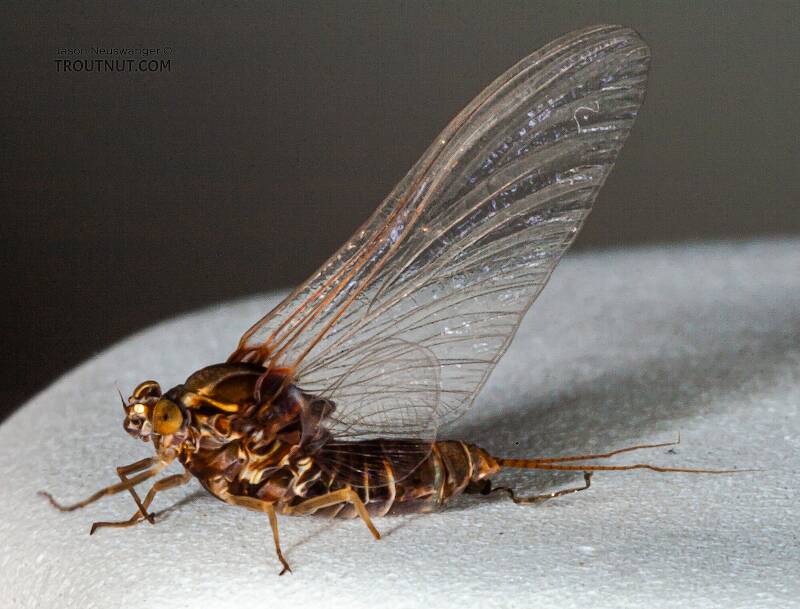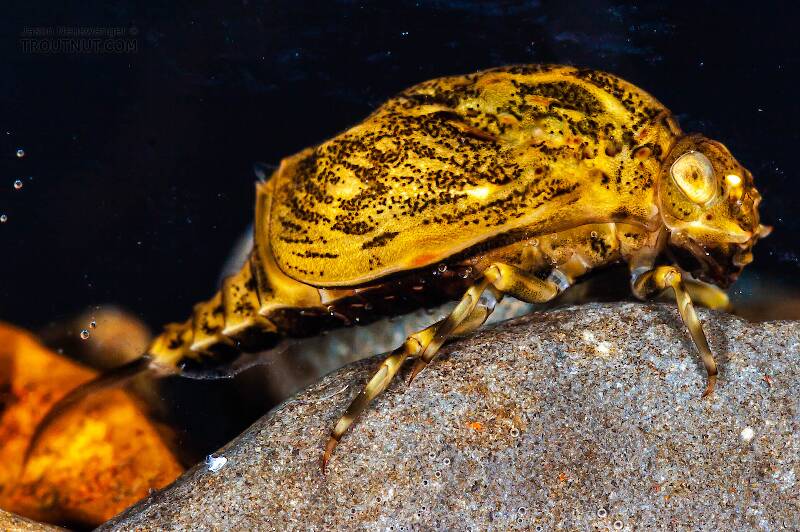
Blue-winged Olives
Baetis
Tiny Baetis mayflies are perhaps the most commonly encountered and imitated by anglers on all American trout streams due to their great abundance, widespread distribution, and trout-friendly emergence habits.
Featured on the forum

This one seems to tentatively key to Holocentropus, although I can't make out the anal spines in Couplet 7 of the Key to Genera of Polycentropodidae Larvae nor the dark bands in Couplet 4 of the Key to Genera of Polycentropodidae Larvae, making me wonder if I went wrong somewhere in keying it out. I don't see where that could have happened, though. It might also be that it's a very immature larva and doesn't possess all the identifying characteristics in the key yet. If Holocentropus is correct, then Holocentropus flavus and Holocentropus interruptus are the two likely possibilities based on range, but I was not able to find a description of their larvae.

Troutnut is a project started in 2003 by salmonid ecologist Jason "Troutnut" Neuswanger to help anglers and
fly tyers unabashedly embrace the entomological side of the sport. Learn more about Troutnut or
support the project for an enhanced experience here.
No-Name Mayflies
In some parts of Wisconsin, local anglers speak fondly of "The No-Name Hatch." They use the term specifically for a hatch of Baetisca laurentina mayflies.
This common name refers to only one genus. Click its scientific name to learn more.
Mayfly Genus Baetisca
These are very rarely called No-Name Mayflies.
These mayflies are a sleeper hatch which has barely received a nod in the fly fishing literature. Their abundance never matches that of the classic superhatches, but they can be important on some waters. The taxonomic common name for this family and genus is Armored Mayfly but angler reports often refer to them as Humpback Nymphs and the adults as Speckled Duns or Batflies.
Their primary claim to fame is their peculiar shape, both as nymphs and as adults. On most rivers they are a rare oddity, but there are places where their spinner falls elicit greedy rises and staunch selectivity from the trout. These spinners never even come close to blanketing the water, but trout have such an affinity for them that even their sparsest falls should excite the angler.
I favor two explanations for their importance. First, they have a very stout profile, and late-season beetle action suggests that trout like this trait. Second, the Baetisca action lasts for up to a month on a single stretch of water. This caters to the selective trout's love of the familiar.
Their primary claim to fame is their peculiar shape, both as nymphs and as adults. On most rivers they are a rare oddity, but there are places where their spinner falls elicit greedy rises and staunch selectivity from the trout. These spinners never even come close to blanketing the water, but trout have such an affinity for them that even their sparsest falls should excite the angler.
I favor two explanations for their importance. First, they have a very stout profile, and late-season beetle action suggests that trout like this trait. Second, the Baetisca action lasts for up to a month on a single stretch of water. This caters to the selective trout's love of the familiar.
See 22 more specimens...




